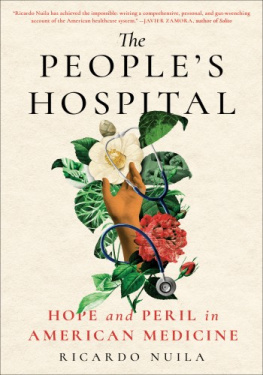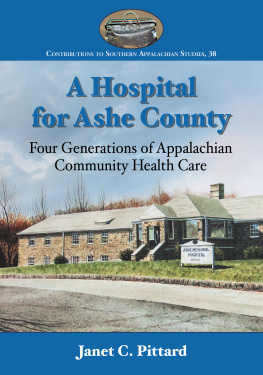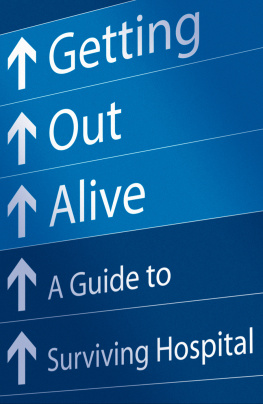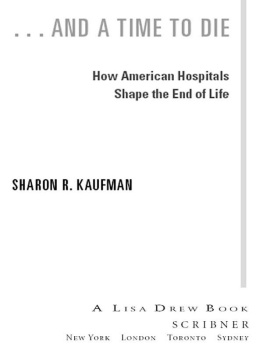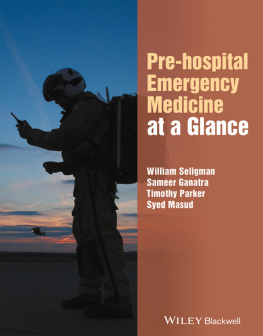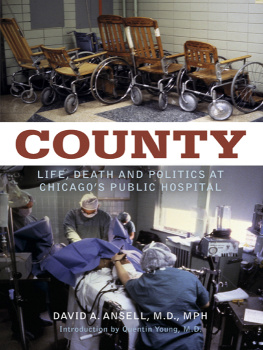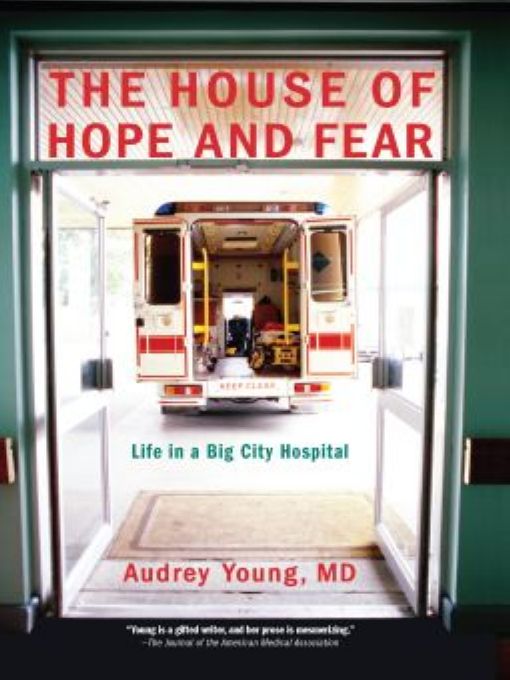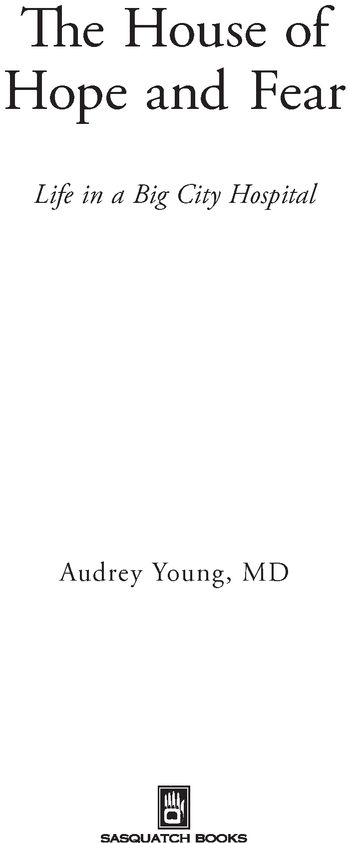Table of Contents
Authors Note
Doctors refine their craft by talking about their cases and stories with one another. Ive tried to write this book in that tradition. To protect privacy, names and identifying details of all patients were altered and in some cases blended to portray common clinical situations. Whenever possible, I obtained permission to use stories from the patients or surviving family members. My own experiences are true, as are those of my colleagues, who appear here under their real names.
Preface: A Place for the Poor
The King County hospital opened for business in 1931, near the intersection of Ninth Avenue and Jefferson Street, on a hill above downtown Seattle. The hospital would serve the citys poor and indigent in a stately new $2.75 million facility that featured wide hallways, high ceilings, and sweeping views of the harbor. The building was done in art deco style, according to the latest fashion of the East Coast teaching hospitals, and was a significant upgrade from prior quarters. City newspapers howled over the exorbitant cost and political cartoons depicted doctors pouring champagne into the mouths of patients. It was an early rendition on the idea that we should help the poor, but perhaps without spending too much money.
The new county hospital suffered immediately from crowded conditions. A south-facing extension was added some years later, and after the University of Washington medical school assumed management in the 1960s, the complex came to include a north wing, a mental health building, and an upgraded research tower with faculty offices. A west wing with matching yellow brick siding was built in the 1990s, and the hospital at present has eight floors of wards, seven distinct ICUs, sixteen operating suites, and more than 100,000 square feet of clinic space. When viewed from the Seattle harbor, the hospitalnow known as Harborviewis an elegant collection of architecturally cohesive structures sitting high atop the city skyline. The place is so large that when a senior medicine resident is at a patients bedside in the medical ICU on the second floor of the new wing, and there is a Code Blue in the burn ICU on the top floor of the old building, the resident has a one-fifth-mile dash with 130 feet of elevation gain ahead of her.
Despite the vast space, crowds at Harborview still hit capacity on a more or less daily basis, thanks to the wildly expanding pool of the gainfully employed who no longer have health insurance or never had it, and those known in the health services trade as the underinsured. Some of the hospitals clientele are visible in the immediate neighborhood, emerging from shelters with their life possessions, and queuing up in soup kitchen lines. Others live in the enormous public apartment towers or Section 8 town-houses favored by Somali, Eritrean, and Hmong refugees, many of whom grow radiant flowers and vegetables on their tiny plots of land. Some ride to the hospital from nearby neighborhoods on the numbers 3, 4, and 60 public buses, and some are brought by taxi, squad car, jail van, private vehicle, or ambulance. Those in the greatest hurry come by the airlift helicopter that banks low across Interstate-5 and touches down on the helipad with burn and trauma victims from across the state, and sometimes from as far afield as Alaska, Montana, and northern Idaho.
Because of the hospitals rapidly growing client base, patients who require hospitalization must sometimes wait in the hallways for as long as a day before a legitimate bed becomes available upstairs. The Garden View area, so named by the emergency department staff, was for a time one typical holding space. The view was not of gardens, naturally, but of ambulances unloading patients on the ramp outside. When this temporary unit was pressed into operation, a nurse, cardiac monitoring equipment, oxygen tanks, and ten thinly padded stretchers had to be imported from other locations in the hospital, and makeshift folding curtains were placed between beds for a suggestion of privacy. With the exception of a computer terminal rolled in on a portable desk, Garden View looked like a scene from a period movie.
And so the torrid pace of construction continues. The aging mental health building was recently demolished and foundation poured for a glassy nine-story building that will hold fifty more hospital beds, eight new operating rooms, and several floors of clinics. An entire city block catty-corner from the 1931 building has been leveled to make room for still more medical facilities, displacing a decades-old apartment building, a two-story walk-up, a grocery, a Chinese take-out joint, a dry cleaning business, and convenient parking for families of ICU patients. This city blocksize structure will feature retail shops at street level and original artwork in the lobbies, along with many hundreds of thousands of square feet of additional clinic and office space.
If it is impossible to imagine how patients will actually fill the planned space, consider that the same was said a few years earlier about the expanded emergency room and intensive care units, and then about the brand-new observation unit, which was carved from a storage area. Those beds all filled within hours of opening.
Public hospitals originated from eighteenth-century urban almshouses built and run by the wealthy elite, and well-connected physicians were invited into these houses to provide free care for the destitute sick. In time, hospitals developed new medical and surgical therapies that began to draw paying patients, and hospital trustees learned that care for the poor could be funded with the medical fees the better-off patients paid. This commercial transformation continued in the twentieth century, as a new class of hospitals began to offer private rooms with personal steam baths and sunlamps, in hopes of attracting wealthy clients, and abandoned the original charitable function of hospitals. The sick indigent were left for the public hospitals.
Public hospitals came to rely heavily on government funding and volunteer physicians in order to survive, and many became known for overcrowding and squalid conditions, inept management, and inadequate medical care. The private sector maneuvered skillfully to protect its market share, and for a time the California supreme court even held that public hospitals could only accept nonpaying patients. Needless to say, many public hospitals did not survive this environment. Among hospitals that closed toward the latter part of the twentieth century was Philadelphia General, the first hospital to open in America, in 1751. Despite these unfavorable circumstances, the King County hospital in Seattle managed to survive.
When I arrived at Harborview for the first time in 1996 as a third-year medical student on the trauma surgery service, I knew next to nothing about the intense pressures facing contemporary public hospitals. To me then, the hospital had only the thumping pulse and plotlessness of a music video. But I was drawn to the energy of the place, and I returned for clinical experiences whenever the opportunity presented itself. Only later would I learn that while I was undergoing my clinical training, between the years 1996 and 2002, one-sixth of the urban public hospitals in the United States shut their doors for good, and in smaller or more remote locales, public hospital closures exceeded one in four.
After I finished my residency in general internal medicine, I opted to stay on at Harborview as an attendingor fully licenseddoctor. I was thirty years old, and at that time, single. I had many reasons for staying on, one of which was that the hospital seemed like a place where people who arrived ill and out of options could genuinely get some help. Equally important was that so many of the physicians were the sort of people I hoped to become. Among these were Michael Copassa jack of many trades who preached equality but in his heart seemed to most enjoy helping the working poor and the vulnerableand colorful doctors like nephrologist Pat Fleet, who was known for taking on challenging cases, such as drug addicts who had threatened to kill their previous doctors.



